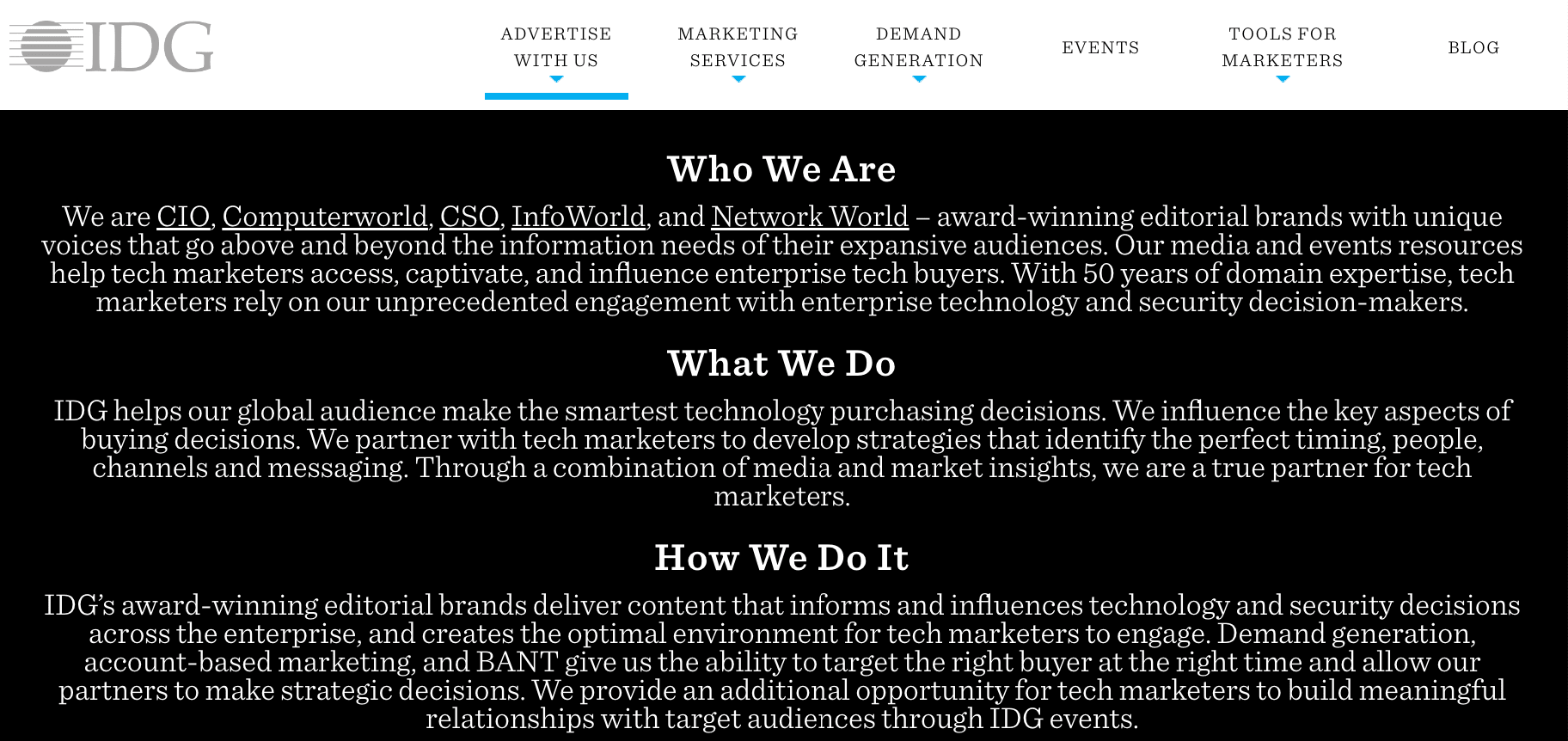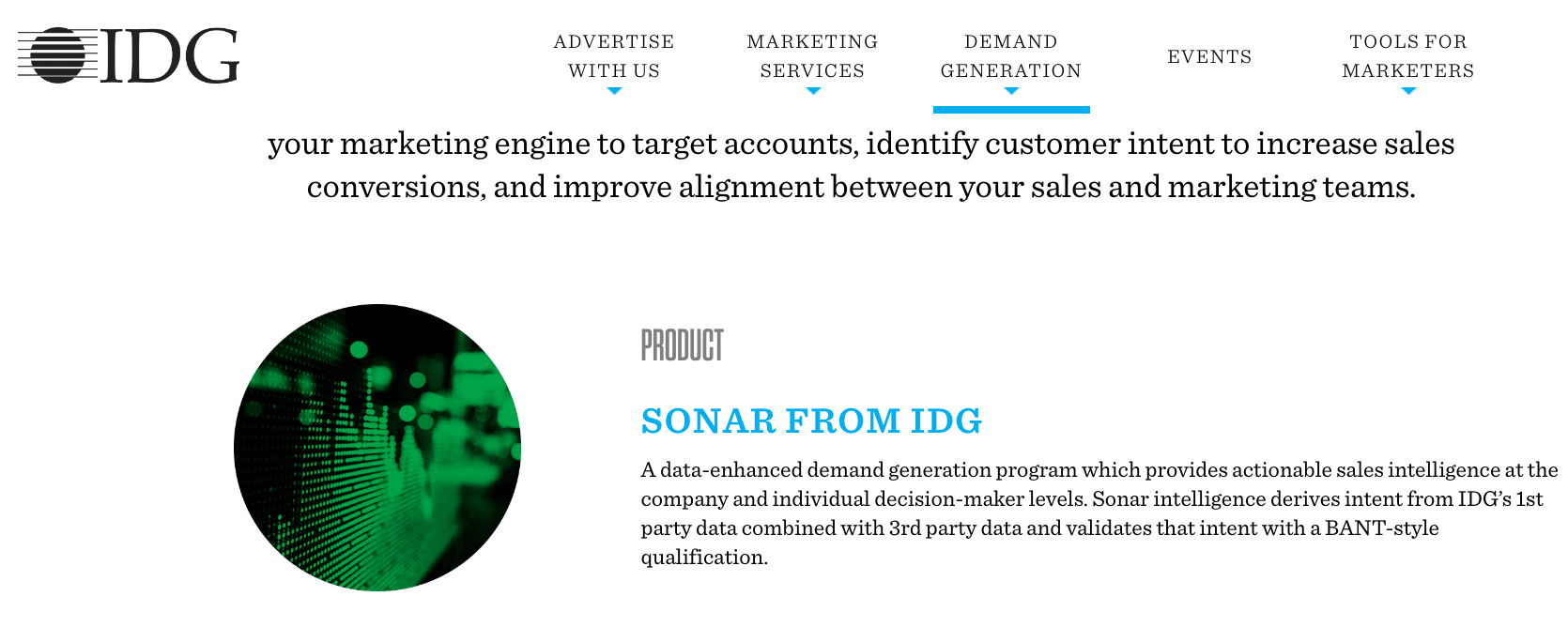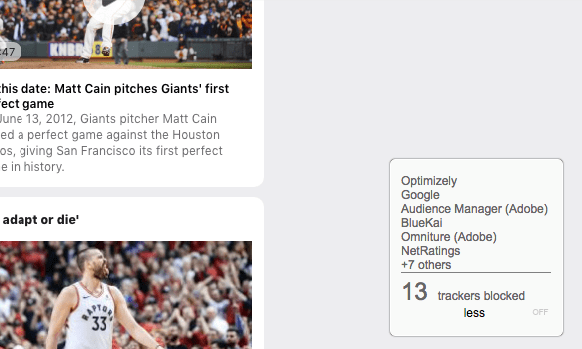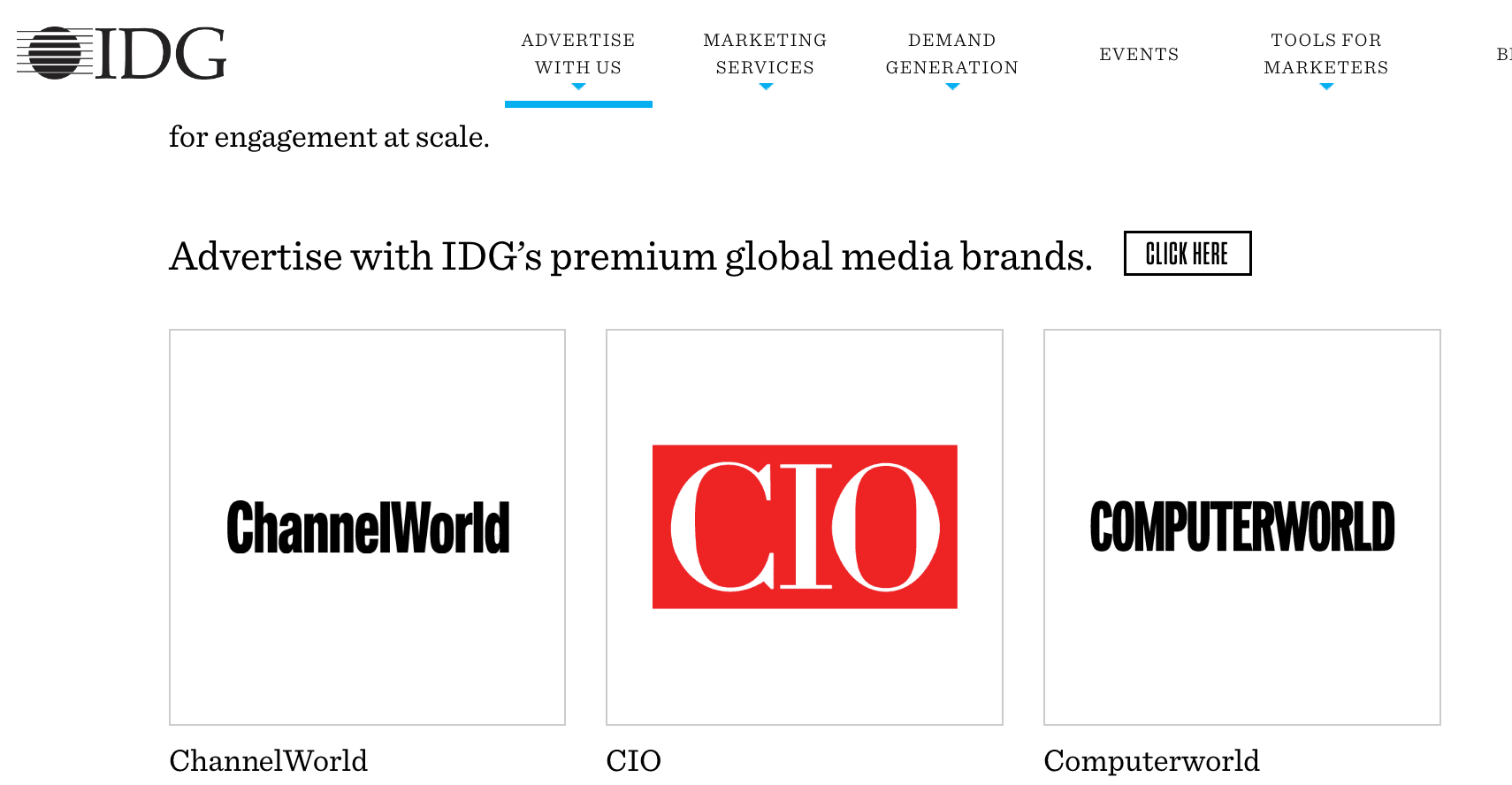The Problem With IDG’s Media Conflict of Interests
Executive Summary
- Media entities in IT have a significant problem with conflicts of interest.
- IDG demonstrates these conflicts right on their website.
Introduction
We are careful not to have any conflicts of interest in our research. This means accepting no income from vendors or any entity that would influence our research output. This gives us a great interest in IDG’s business model.
Our References for This Article
If you want to see our references for this article and related Brightwork articles, see this link.
IDG Marketing Services?
Under Marketing Services, IDG shows the following offering.

This means that IDG produces content that helps promote prospects to buy — at the behest of those entities that pay IDG.
This means that IDG’s content cannot be trusted because they write (at least partially) based on entities that pay them to help get sales.
Advertise with IDG
Under IDG’s advertising page, they list the following information.  Here IDG lists their major IT media brands like CIO, Computerworld, etc… These are brands through which IDG publishes.
Here IDG lists their major IT media brands like CIO, Computerworld, etc… These are brands through which IDG publishes.
It is difficult to see how IDG can write unbiased articles, influence critical aspects of buying decisions, and partner with tech marketers.

IDG is not just writing compromised content that is written for vendors but read by sellers.
IDG is also providing a marketing automation application that uses data that is taken from readers with other data from, as they say, “third-party applications.”
This makes us suspicious of the data that IDG collects with cookies. So we performed a test.
Brightwork Research Versus IDG’s ComputerWorld and CIO Tracking
We decided to test how many individual tracking items are used on our website versus IDG’s ComputerWorld and CIO.
![]()
The following are the number trackers that were blocked by our tracking blocking browser. One is Google, which is not related to what the site does.
The second is Pingdom, a service we use that tells us where the visitor is from, how long the website takes to load, and essential performance characteristics. We are unaware of what the other four trackers are. But we only use Pingdom, and we use it internally and do not sell any information about visitors to customers.
We never thought of doing this.
![]()
This is the number of trackers involved when one goes to the ComputerWorld site. Twenty-eight trackers are quite a few trackers.
![]()
CIO, another IDG publication, has even more trackers, at thirty-one separate trackers.
These trackers are initiated every time a web page from CIO or ComputerWorld is loaded into a browser.
ESPN’s Tracking
As a point of comparison, we checked the number of trackers on the ESPN sports site.

Interesting. Even a sports site can have 13 separate trackers.
The Wall Street Journal’s Tracking

The Wall Street Journal had only eight trackers, which is not much more than on our website, where we only know of one active tracking (Pingdom). This seems to imply that the Wall Street Journal is not aggressively tracking its visitors. First, the Wall Street Journal relies on both subscriptions and advertising.
The Scale of IDG’s Reader Tracking
ComputerWorld averages 4.3 million visitors per month. CIO averages two million visitors per month.

Furthermore, IDG owns six other publications in the enterprise software space with a monthly visitor number of roughly 12 million. And when IDG provides information to vendors, they are not going to offer it for just one publication. Instead, it is aggregated for all the publications that are related to one another. That is a lot of information that is being sold to vendors and consulting firms.
- This means that IDG is tracking all website visitors and is making a great effort to do so.
- A big part of its business model is selling this information to industry sources.
- IDG has every incentive to be extremely invasive with its site visitors and little incentive to not collect as much data as they can from visitors.
Conclusion
IDG is a corrupt entity that is primarily selling out the interests of visitors. They not only have partnerships and advertising that influence the media output, but they serve as a marketing front end for IDG’s customers that are invading the privacy of their visitors.
The Lack of Disclosure
There is nowhere on any of IDG’s websites that express how the websites to function or the massive conflicts of interest that control IDG. The place to find this information is IDG.com. A site focused on selling to companies and which very few individuals ever visit. They publish no articles at that URL, so there is no reason for any reader of ComputerWorld or CIO or other to visit the site.
IDG only tells the truth of how they operate to those they are trying to sell their services to and not to its readers.
